Digital
Humanitarians
How Big Data is Changing the Face of Humanitarian Response
The overflow of information generated during disasters can be as paralyzing to humanitarian response as the lack of information. This flash flood of information is often referred to as Big Data, or Big Crisis Data. Making sense of Big Crisis Data is proving to be an impossible challenge for traditional humanitarian organizations, which is precisely why they’re turning to Digital Humanitarians.
Written by: @PatrickMeier
Book hashtag: #DigitalJedis
Introduction
Who exactly are these Digital Humanitarians? They’re you, me, all of us. Digital Humanitarians are volunteers and professionals from the world over and from all walks of life. What do they share in common? The desire to make a difference, and they do by rapidly mobilizing online in collaboration with international humanitarian organizations. In virtually real-time, they make sense of vast volumes of social media, SMS and imagery captured from satellites and UAVs to support relief efforts worldwide. How? They craft and leverage ingenious crowdsourcing solutions with trail-blazing insights from artificial intelligence.
“This book charts the sudden and spectacular rise of Digital Humanitarians by sharing their remarkable, real-life stories, highlighting how their humanity coupled with innovative solutions to Big Data is changing humanitarian response forever. Digital Humanitarians will make you think differently about what it means to be humanitarian and will invite you to join the journey online.”
From the introduction by Patrick Meier
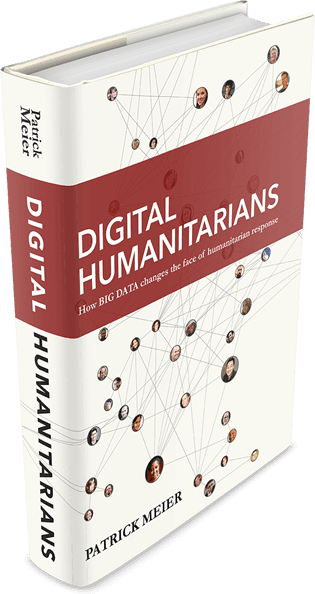
Foreword
Digital Humanitarians tells the compelling story of how mobile technologies, computer applications, and vast quantities of digital data work in concert with a dedicated global network of new humanitarians ready to shed light on disaster-affected areas in hours, not days and weeks. Just how quickly the technology, applications and processes are developing is astounding. One gets the sense of being hurled from the Middle Ages to the Enlightenment at exponentially increasing velocity. From the foreword by the Executive Director of the Harvard Humanitarian Initiative (HHI) at Harvard University
Chapters
Video: Big Data & International Committee of the Red Cross (ICRC)
The stories in this book are written in non-technical language;
so you won’t need a background in technology or computing
to understand and enjoy this book.

The Rise of the
Digital Humanitarians
Charts the sudden rise of Digital Humanitarians during the 2010 Haiti Earthquake. This was the first time that thousands of digital volunteers mobilized online to support search and rescue efforts and human relief operations on the ground. These digital humanitarians used crowdsourcing to make sense of social media, text messages and satellite imagery, creating unique digital crisis maps that reflected the situation on the ground in near real-time.
The Rise of Big (Crisis) Data
Introduces the notion of Big Data and addresses concerns around the use of Big (Crisis) Data for humanitarian response. These include data bias, discrimination, false data and threats to privacy. The chapter draws on several stories to explain why the two main concerns for the future of digital humanitarian response are: Big (Size) Data and Big (False) Data. As such, the first two chapters of the book set the stage for the main stories that follow.

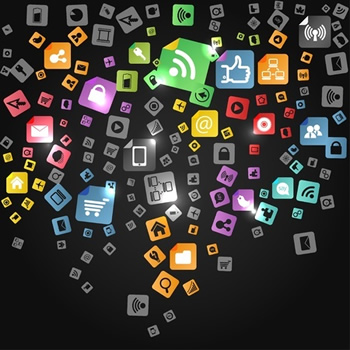
Crowd Computing Social Media
Begins with the digital humanitarian response to massive forest fires in Russia and traces the evolution of digital humanitarians through subsequent digital deployments in Libya, the Philippines and beyond. This evolution sees a shift towards the use of a smarter crowdsourcing approach—called crowd computing—to make sense of Big Crisis Data. The chapter describes the launch of the Digital Humanitarian Network (DHN), co-founded by the United Nations.
Crowd Computing
Satellite & Aerial Imagery
Considers the application of crowd computing to imagery captured by orbiting satellites and flying drones (or UAVs). The chapter begins with the most massive digital crowdsearching effort ever carried out and contrasts this to a related UN project in Somalia. The chapter then describes an exciting project driven by a new generation of satellites and digital humanitarians. The chapter also highlights the rise of humanitarian UAVs and explains the implications for the future of disaster response.
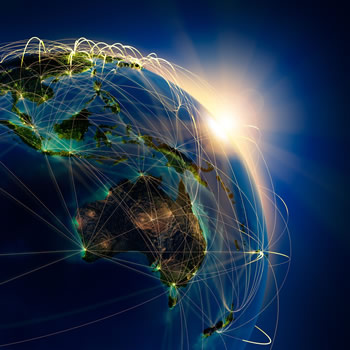
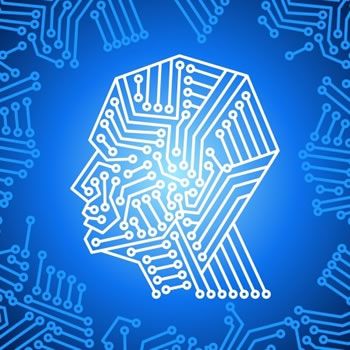
Artificial Intelligence
for Disaster Response
Returns to social media as a source of Big Data and explains why crowd computing alone may only be part of the solution. The chapter introduces concepts from advanced computing and artificial intelligence—such as data mining and machine learning—to explain how these are already being used to make sense of Big Data during disasters. The chapter highlights how digital humanitarians have been using these new techniques in response to the crisis in Syria. The chapter also describes how artificial intelligence is also being used to make sense of vast volumes of text messages (SMS).
Artificial Intelligence in the Sky
Extends the use of artificial intelligence and machine learning to the world of satellite and aerial imagery. The chapter draws on examples from Haiti and the Philippines to describe the very latest breakthroughs in automated imagery analysis. The chapter then highlights how these automated techniques are also being applied to rapidly analyze aerial imagery of disaster zones captured by UAVs.


Verifying Big Crisis Data
Begins to tackle the challenge of Big (False) Data—that is, misinformation and disinformation generated on social media during disasters. The chapter opens with the verification challenges that digital humanitarians faced in Libya and Russia. Concrete strategies for the verification of social media are presented by drawing on the expertise of multiple digital detectives across the world. The chapter then considers the use of crowdsourcing to verify social media during disasters, highlighting a novel and promising new project inspired by the search for red balloons.
Verifying Big Data
with Artificial Intelligence
Highlights how artificial intelligence and machine learning can be used to verify user-generated content posted on social media during disasters. Drawing on the latest scientific research, the chapter makes a case for combining traditional investigative journalism strategies with new technologies powered by artificial intelligence. The chapter introduce a new project that enables anyone to automatically compute the credibility of tweets.


Dictators versus
Digital Humanitarians
Considers a different take on digital humanitarians by highlighting how their efforts turn to digital activism in countries under repressive rule. The chapter provides an intimate view into the activities of digital humanitarians in the run-up to the Egyptian Revolution. The chapter then highlights how digital activists from China and Iran are drawing on their experience in civil resistance when responding disasters. These experiences suggest that crowdsourced humanitarian response improves civil resistance and vice versa.
Next-Generation
Digital Humanitarians
Distills some of the lessons that digital humanitarians can learn from digital activists in repressive countries. These lessons and best practices highlight the importance of developing innovative policies and not just innovative technologies. The importance of forward-thinking policy-solutions pervades the chapter; from the use of cell phone data to spam filters and massive multiplayer online games. Technology alone won’t solve the myriad of challenges that digital humanitarians face. Enlightened leadership and forward-thinking policy-making are equally—if not more important than— breakthroughs in humanitarian technology. The chapter concludes by highlighting key trends that are likely to define the next generation of digital humanitarians.

Get involved
The digital humanitarian response to the 2010 Haiti Earthquake was the genesis of an extraordinary story. In the midst of this terrible tragedy, a powerful movement was born, aided by digital technologies and driven by thousands of volunteers who cared and wanted to help; they were the first rays of hope that signaled the rise of today’s Digital Humanitarians. This book is their story. Our story. My story. You too can become a digital humanitarian, absolutely no prior experience or technical necessary; all you need is a big heart and access to the Internet.
So consider this an open invitation.
To become a Digital Humanitarian, simply join MicroMappers. If you’d like to get more involved, you can also join the Standby Task Force (SBTF) and the Humanitarian OpenStreetMap Team (HOT). If you’re looking for even more options, check out the Digital Humanitarian Network (DHN), which was co-founded by the United Nations.
If you’d like to test-run the humanitarian technology prototypes mentioned in the book:
- Artificial Intelligence for Disaster Response (AIDR)
- Planetary Response Network
- TweetCred
- Verily
Want to give a talk on Digital Humanitarians at a conference or in your classroom? Feel free to use any of my slides: http://www.slideshare.net/iRevolution
I’m continuing the Digital Humanitarians story over at iRevolutions and on Twitter. Feel free to get in touch with me there if you’d like to guest blog your story on digital humanitarians in action.
Endorsements
Humanitarians, Scholars and Technologists from the following organizations have endorsed this book: United Nations, International Committee of the Red Cross (ICRC), US Agency for International Development (USAID), Department for International Development (DfID), American Red Cross, NetHope, World Bank, US Institute of Peace (USIP), National Geographic, Harvard University, Stanford University, Georgetown University, Oxford University, MIT Media Lab, UN Global Pulse and Twitter.
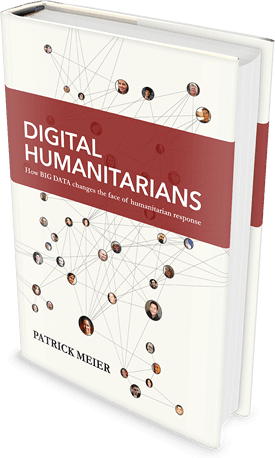
Humanitarians
“This book breaks new ground, as Patrick Meier charts the optimism, the possibilities, and the dilemmas of a new Digital Humanitarianism from his own first hand experience. For anyone in the Humanitarian sector - ignore this book at your peril.” Tarun Sarwal, Innovation Advisor, International Committee of the Red Cross (Icrc)
“Patrick Meier has been the leading figure in creating a new type of disaster responders, digital humanitarians and in this groundbreaking book he takes us through the story of how technology can truly revolutionize how we deal with some of the most chaotic events we experience.” GISLI OLAFSSON, EMERGENCY RESPONSE DIRECTOR, NETHOPE
“This book is deeply relevant and astonishingly up to date. No surprise—Patrick Meier has been the heartbeat of digital humanitarianism long before the phrase was coined and only he could have written this account. Eminently readable, packed with details and insights, this book presents and explains a [Big Data] phenomenon that is still in its early stages. Every consumer of world news and everyone living in a potential disaster zone must read this book to see how globalized digital sets of networks—and the volunteers behind them—are transforming our capacities to help locate, talk to, rescue, and sustain people trapped in the major calamities of our time.” JENNIFER LEANING, SEASONED HUMANITARIAN AND PROFESSOR AT HARVARD UNIVERSITY
“Patrick Meier’s new book is extraordinarily timely, providing practitioners and policy makers with an accessible guide to how digital technology can help to improve humanitarian outcomes.” JOANNA MACRAE, HEAD OF HUMANITARIAN INNOVATION PROGRAMME, DEPARTMENT FOR INTERNATIONAL DEVELOPMENT (DFID).
“This book shows us once again why Patrick Meier is a thought leader in leveraging emerging technologies for social impact. His book captures the enormous possibilities and avoidable pitfalls of big data, social media and artificial intelligence in crisis contexts. Digital humanitarians can be powerful agents for social change but ground-truthing what we see and hear digitally is more important than ever.” ALEEM WALJI, CHIEF INNOVATION ADVISOR, WORLD BANK GROUP
“Meier offers an illuminating look at how digital humanitarians have been creating value from big data for nearly a half-decade. He changes the narrative surrounding the “traditional” humanitarian community - often thought to be intransigent and inflexible - by presenting examples of how humanitarian organizations are actively exploring how to incorporate big data and crowdsourcing into their decision-making processes. His authoritative volume crackles with honest insights about the current and future state of humanitarian response.” ALBERT GEMBARA, TECHNOLOGY INTEGRATION OFFICER, UNITED STATES AGENCY FOR INTERNATIONAL DEVELOPMENT (USAID)
“For all the technology firsts, this is first a story about volunteers. It is also a story about the relentless application of fundamental information technology skills, collecting, processing and making understandable an avalanche of data. Not only is this about the heart of information technology professionals, it is about the application of information technology skills; and in a crisis, any professional wants to contribute what they know best.” ED HAPP, CHIEF INFORMATION OFFICER OF THE INTERNATIONAL FEDERATION OF THE RED CROSS AND RED CRESCENT SOCIETIES (IFRC)
“If you want to be enlightened about how technology is revolutionizing humanitarian aid, then this book is for you. In Digital Humanitarians Patrick Meier depicts a humanitarian endeavour that is being enriched by the efforts of a growing global network of smart, savvy innovators. Expertly fusing front-line experience, technological expertise, and a deeply humane worldview, Meier closes with a rousing call for change: toward a more open, democratic humanitarian system. All of us working in international disaster response should be paying close attention.” BEN RAMALINGAM, CHAIR OF THE HUMANITARIAN INNOVATION FUND (HIF)
“Patrick Meier is a master cartographer. He is a talented crisis mapper, sure, but he’s mapping something even bigger in this book. He’s mapping the ecosystem of digital humanitarianism – the hills of human motivations, the seas of human institutions, and the urban landscape of human technology. The ideas and stories here not only plot the path for digital humanitarians in disasters, but they illuminate a runway of opportunity for all of philanthropy and social innovation in the digital age.” WENDY HARMAN, DIRECTOR OF INFORMATION MANAGEMENT AND SITUATIONAL AWARENESS, AMERICAN RED CROSS
Scholars
“Something very like the fog of war afflicts crisis response. On the ground, simply knowing what is wrong - who is suffering? where is the danger? - is both critical and difficult. In Digital Humanitarians, Patrick Meier, a scholar and practitioner of crisis response, shows us how simple digital tools, built and staffed by a worldwide network of volunteers, are providing faster and more comprehensive data for disaster response efforts. Working from examples like the Haitian earthquake and the Arab Spring, Meier shows how tools from artificial intelligence to aerial drones, and techniques from crowdmapping to distributed fact-checking, are helping to dispel some of that fog.” CLAY SHIRKY, PROFESSOR AT NEW YORK UNIVERSITY
“In this definitive and often gripping account, Patrick Meier traces the rise of a new generation of global humanitarians who are using social media, satellite and aerial drone imagery, microtasking, big data, and other digital tools to respond to natural disasters and political humanitarian crises. A leader himself in the efforts to develop and network digital tools for social good, Meier shows how technology, idealism, and global social networking are rapidly co-evolving to empower local actors and enhance the world’s ability to respond to complex emergencies. This is a fascinating, important, and deeply hopeful book about the way digital tools are facilitating and transforming global cooperation.” LARRY DIAMOND, PROFESSOR AT STANFORD UNIVERSITY
“Intelligent, well-written, and inspiring, Digital Humanitarians offers an agenda for how the world can use technology to transform the lives of people in crisis. It combines a rare understanding of the state-of-the-art in innovation and technology with sensitivity to the most pressing global challenges. It should be read by anyone who cares about our common future.” ALEXANDER BETTS, PROFESSOR AT THE UNIVERSITY OF OXFORD AND DIRECTOR OF THE HUMANITARIAN INNOVATION PROJECT
“I dare you to read this book and not have both your heart and mind opened. Patrick Meier writes compellingly about his first-hand accounts of people around the world working together to help disaster victims through advanced computing solutions.” LEYSIA PALEN, PROFESSOR AT THE UNIVERSITY OF COLORADO, BOULDER
“Patrick Meier’s brilliant and inspiring book documents the power that everyday citizens have when responding to humanitarian crises or political repression. Patrick writes from the unique perspective of having played a key role in the development and evolution of the digital humanitarian field. The book provides a wonderful combination of case studies exploring many successes and challenges and also has a critical and necessary exploration of the many ethical issues around the use of technology in humanitarian work, such as privacy, safety, power and agency. This book is a must read for students, faculty, policymakers, activists, simply anyone who is engaged or seeking to engage in technology for social change.” CRAIG ZELIZER, PROFESSOR AT GEORGETOWN UNIVERSITY
“Patrick Meier is the inspiring thought leader behind digital humanitarians, a grassroots revolution with a reach and impact that in only a few years has transformed global humanitarian response. The activation and contribution of digital humanitarians is today an essential part of humanitarian response operations in disaster-affected areas all over the world. Patrick’s book provides for an absolutely essential, practical and inspiring account of the origins and future of this new humanitarian realm, where human ingenuity, new technologies and computational power create unprecedented opportunities for saving human lives. I consider this book as authoritative core reading for academics, practitioners and policy makers for years to come.” BARTEL VAN DE WALLE, CO-FOUNDER, INFORMATION SYSTEMS FOR CRISIS RESPONSE AND MANAGEMENT (ISCRAM)
Technologists
“Patrick Meier is a passionate evangelist for the power of big data to help us respond to natural disasters and other crises. He is also a careful scholar who thinks deeply about the limits and potential dangers of data- centric approaches. His book offers both inspiration for those around the world who want to improve our disaster response and a set of fertile challenges to ensure we use data wisely and ethically.” ETHAN ZUCKERMAN, DIRECTOR, MIT CENTER FOR CIVIC MEDIA
“An insider’s guide to the humanitarian data revolution, seen through the eyes of a thought leader, scholar, and expert practitioner on the front lines of a global movement that is already transforming how we understand and respond to crises.” ROBERT KIRKPATRICK, DIRECTOR OF UNITED NATIONS GLOBAL PULSE
“Business, economics and governance are transforming as traditional state based institutions are supplemented and indeed eclipsed by non-state networks of civil society. New technologies are enabling regular citizens to connect, collaborate and save lives. In his book, Meier shows these same trends emerging in the field of humanitarian response. Global problem solving is rapidly evolving and Meier will help get you on board.” Don Tapscott, Founder of Global Solutions Network and co-author of Wikinomics
“Finally, someone who knows both the potential of mobile, networked technologies and the practicalities of how to use these tools to enhance humanitarian work. Meier’s new book, Digital Humanitarians, has the potential to relieve suffering by showing activists, citizens, and technologists how to use everything from satellite imagery to big data techniques and social media to save lives in natural disasters and other crises that require humanitarian response. This book can save lives!” HOWARD RHEINGOLD, STANFORD UNIVERSITY
“Since it became possible for nearly anyone with a cell phone or an internet connection to send data, photos and other information around the world with a few key strokes, we’ve seen a number of books attempt to catalog this incredible revolution. What makes this book different – and exceptionally important to humanitarians and peacebuilders alike – is that it has been written from the perspective of one who has helped to lead the revolution. If you want to understand both the power and the pitfalls of digital humanitarianism – a movement unprecedented in human history – read Patrick’s take on it. You’ll be richer for it.” SHELDON HIMELFARB, DIRECTOR OF PEACETECH LAB, UNITED STATES INSTITUTE FOR PEACE (USIP)
“Patrick Meier is a humanitarian in the trenches - working tirelessly to use technology for the greater good. In his new book, he highlights the latest solutions revolutionizing humanitarian response, ranging from social media platforms powered by artificial intelligence to crowd computing solutions that analyze satellite and UAV imagery. Throughout the book, however, Patrick returns to the fundamental story behind these technologies - the human story, the digital humanitarian volunteers who mobilize across time zones to help others in need. As Patrick says, “This is the kind of world I want to live in.” CLAIRE DIAZ-ORTIZ, DIRECTOR OF SOCIAL INNOVATION, TWITTER
“Meier’s book is essential reading on at least two counts. First, it captures key developments on and around the use of web, Internet and mobile communications during and after disasters, cutting through the hype and grappling with critical questions related to technology and governance. Second, it is a timely publication. The preparation, response to and recovery from disasters today is inextricably entwined with technology, at local, regional and international levels. Meier looks at how what is already taken for granted came about, and looks critically at what it means for humanitarianism in the future.” DANIEL STAUFFACHER, FORMER AMBASSADOR TO THE UNITED NATIONS & FOUNDER OF THE ICT FOR PEACE FOUNDATION (ICT4PEACE)
“The ideas and lessons in this book could save millions of lives in the 21st century. Digital tools – from crowdsourced mobile data to satellite imagery — promise to make the world more transparent, more inclusive, and more locally empowered. Patrick Meier charts a bold new course for humanitarianism that harnesses technology’s revolutionary potential, while also addressing the need for safeguards. His brilliant combination of scholarship, real-world experience and thoughtful perspective makes this essential reading for anyone who wants understand the future of humanitarian action.” ANDREW ZOLLI, FUTURIST AND AUTHOR OF RESILIENCE: WHY THINGS BOUNCE BACK
“Digital Humanitarian brings to life the power of data through extraordinary stories. From the disaster in Haiti to the search for Genghis Khan, Meier truly leaves you thinking that anything is possible at the intersection of data and humankind’s natural instinct to change the world. I cannot recommend it highly enough especially to anyone who has watched a disaster first hand or from afar – and wondered, 'what can I do?'” Meg Garlinghouse, Head of LinkedIn for Good
Bio
Patrick Meier (PhD) is an internationally recognized thought leader on humanitarian technology and innovation. He currently serves as Director of Social Innovation at QCRI where he develops and prototypes Next Generation Humanitarian Technologies with leading humanitarian organizations. Patrick has also consulted extensively for multiple international organizations including the United Nations and the World Bank. In addition, he has held fellowships with the Rockefeller Foundation, PopTech, UNICEF and is a National Geographic Emerging Explorer. Patrick is also an accomplished speaker, having given talks at the White House, UN, Google, Harvard, Stanford and MIT. He has presented at major international conferences and several TEDx’s. Given his expertise, Patrick is often interviewed by the media, which has included the New York Times, Washington Post, CNN, BBC, UK Guardian, The Economist, Forbes and Times Magazines, Reuters, Wall Street Journal, Foreign Policy, New Scientist, Wired, NPR and others. In 2010, Patrick was publicly praised by Clinton for his pioneering digital humanitarian efforts. His widely-read and influential blog iRevolutions has received over 1.5 million hits. More on Patrick and his current adventures here.
Resources
I’m continuing the Digital Humanitarians story over at iRevolutions and on Twitter. Feel free to get in touch with me there if you’d like to guest blog your story on digital humanitarians in action. Below are my latest blog posts. You can also join my monthly newsletter for brief updates. Please contact me for a copy of the book slides should you wish to give talks about the book.
Acknowledgements
- All digital volunteers
 Ken Banks
Ken Banks
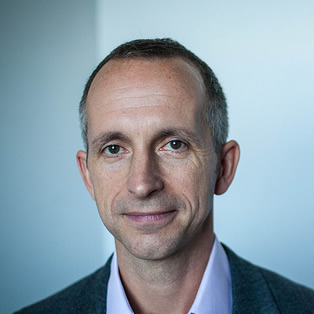 Rob Garris
Rob Garris
 Muhammad Imran
Muhammad Imran
 Justine Mackinnon
Justine Mackinnon
 Rockefeller Foundation
Rockefeller Foundation
 Andrea Verity
Andrea Verity
 Sarah Vieweg
Sarah Vieweg
- Lara Zoble
- Family
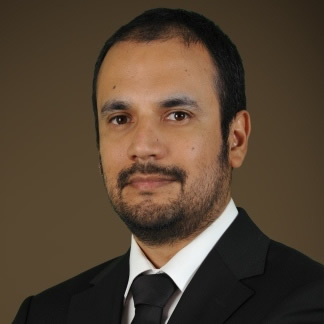 Carlos Castillo
Carlos Castillo
 Digital Humanitarian
Digital Humanitarian
Network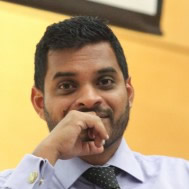 Sanjana Hattotuwa
Sanjana Hattotuwa
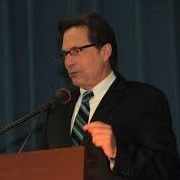 Steven Livingston
Steven Livingston
 Qatar Computing Research Institute
Qatar Computing Research Institute
 Standby Task Force
Standby Task Force
 Andrej Verity
Andrej Verity
Order
Taylor & Francis Press
January 2015
Order T&F Press
Order from Amazon
Click here to join Patrick’s monthly newsletter and receive the very latest updates on digital humanitarians in action, Google Hangouts with the author and for public speaking appearances worldwide.
For speaking requests, please use the contact form below, thank you.
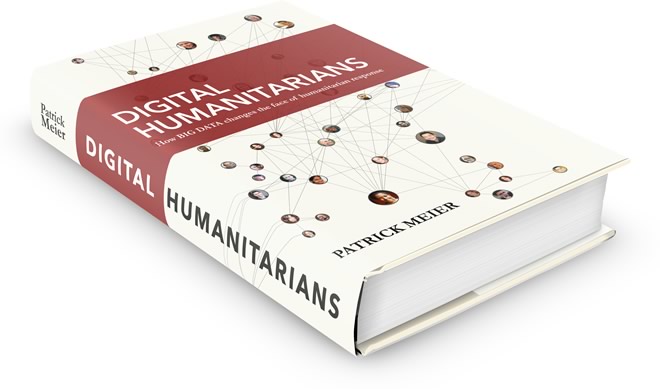
Contact
Click here to join Patrick’s monthly newsletter